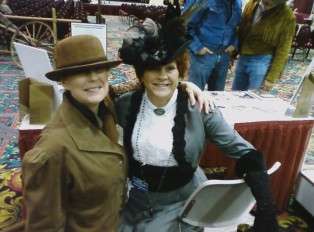The Naked Spy
Mata Hari might not been politically involved, but she most assuredly was involved with politicians. At one time she had the world by its tail-until it turned around and bit her. How else to describe the Dutch officer’s wife who fled to Paris in 1904, changed her name from Margaretha Geertruida Zelle to Mata Hari, and pranced naked onstage while convincing the capitals of Europe that she was an exotic Indian dancer? “I never could dance well,” even she admitted. “People came to see me because I was the first who dare to show myself naked in public.” Just a few years later Mata Hari was despised as the most notorious spy of World War I. Her trouble may have been that she was too popular, so that when war broke out the French and English immediately became suspicious of her German acquaintances. Those “acquaintances” included lovers who had kept her clad in jewels and furs-offstage-throughout her career, and one of them happened to be the German chief of intelligence in Spain. She was followed constantly throughout Europe, and finally, in February 1917, she was arrested at her hotel in Paris and charged with espionage. There is much speculation as to whether Mata Hari really was engaged in passing secrets to the enemy. She had a gift for talking her way into things-it was the foundation of her career, after all-so it could be that she simply got carried away with her own imaginative tales. She claimed she actually meant to spy for the French, even though they hadn’t requested her assistance. Whatever the case, France, on the brink of defeat, was not much in the mood to give her the benefit of the doubt. In a prison outside of Paris, Mata Hari was put in a padded cell to prevent her from committing suicide. Her many appeals were denied, even by her own Dutch government, to which she wrote, “Jealousy-vengeance-there are so many things that crop up in the life of a woman like me, once people know that she finds herself in a difficult position.” On October 15, Mata Hari was awakened at 5 a.m. and informed that she would be shot that morning. “It’s unbelievable!” she said weakly, but otherwise remained composed. She put on a gray dress, a straw hat, and a white veil, then was driven to the Chateau de Vincennes, a military compound outside of Paris. It was just above freezing and foggy when she was led in front of a firing squad of twelve soldiers. She refused to be tied to the pole and refused also to be blindfolded. It is said that as the soldiers raised their rifles, Mata Hari smiled at them, even winked. After she collapsed an army surgeon walked over, checked her briefly, then fired a final shot-the coup de grace-into her head to make sure she was dead. Her body, which had been no secret to much of Europe, was taken to a city hospital in Paris, where it was dissected for medical research.


